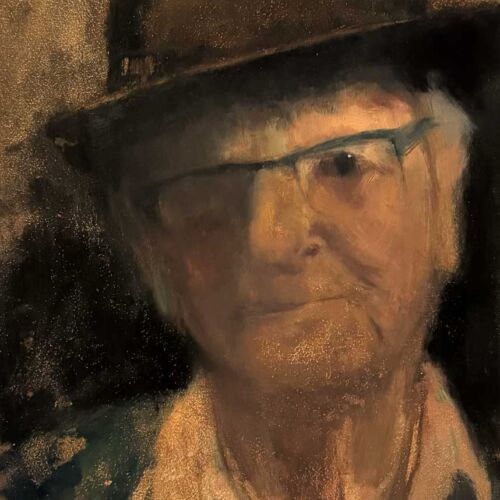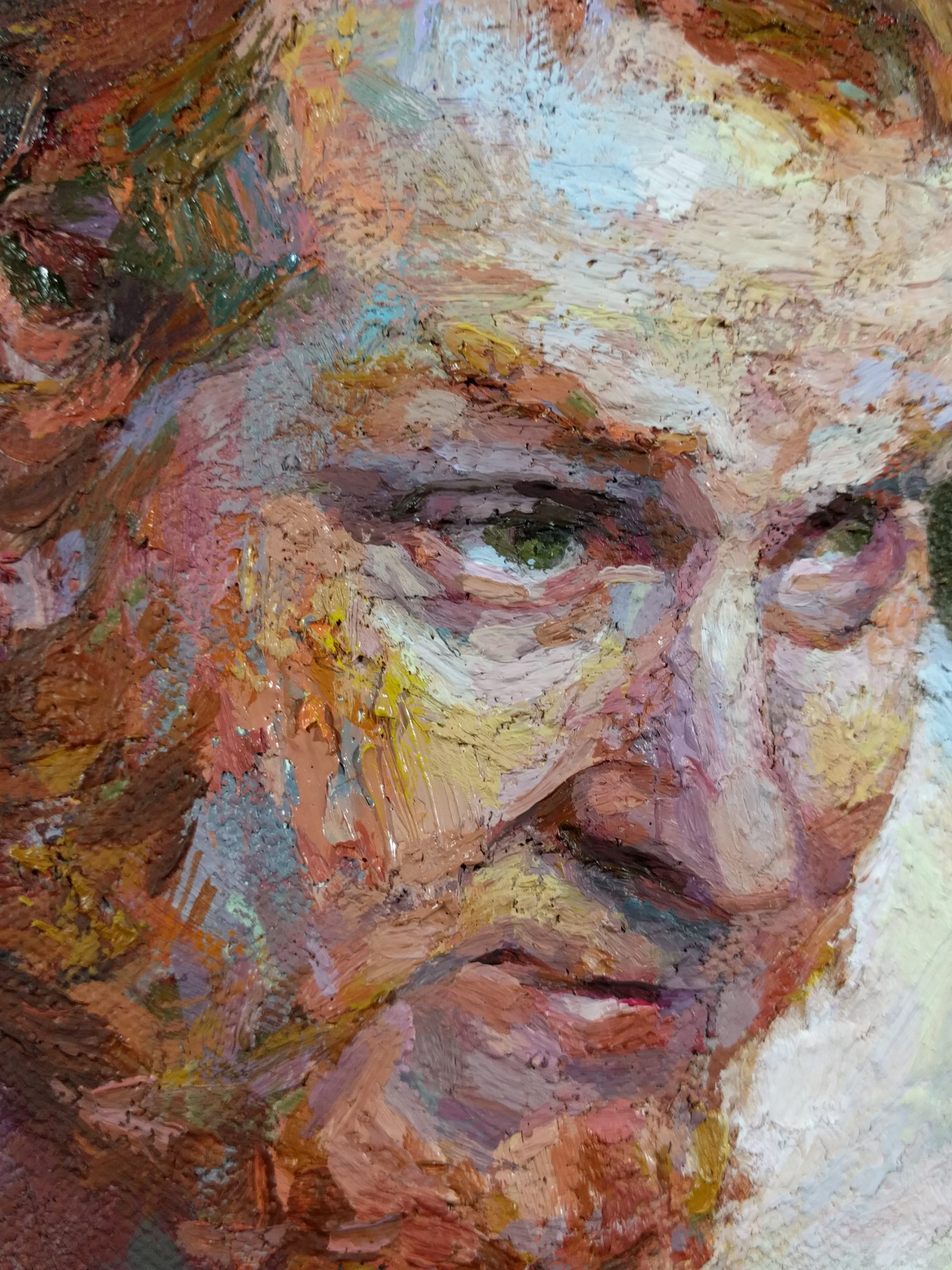The Development of Metaphorical Oil Painting: Comprehending Its Historical Importance and Modern Interpretations
The advancement of metaphorical oil painting serves as an engaging lens with which to examine the interplay in between imaginative expression and historic context. Contemporary artists, attracting from this abundant heritage, are currently reinterpreting the human figure in methods that challenge conventional stories.
Beginnings of Figurative Oil Paint
The origins of metaphorical oil painting can be traced back to the very early Renaissance in Europe, especially in the 15th century. The advancement of oil paint enabled for higher deepness of color and information, boosting the realism and vibrancy of their job.

In this transformative era, numbers were commonly shown within contextually abundant atmospheres, showcasing not just their physical attributes but likewise their emotional states. Pioneers such as Jan van Eyck and Titian took advantage of the medium's convenience, utilizing layering strategies to accomplish luminosity and structure. This development promoted the portrayal of intricate fabrics and the subtleties of complexion, adding to the growth of portrait and narrative scenes.
In Addition, the Renaissance focus on humanism cultivated a gratitude for distinctiveness, which subsequently influenced musicians to create even more relatable and dynamic figures - figurative oil painting. As an outcome, metaphorical oil paint emerged as a powerful vehicle for narration and psychological engagement, preparing for future imaginative motions and designs
Key Historical Movements
Considerable historical movements have actually shaped the development of metaphorical oil paint, each contributing distinct philosophies and strategies that broadened the medium's opportunities. The Renaissance noted a zero hour, stressing realism and the human form, with artists like Leonardo da Vinci and Michelangelo pushing the borders of physiological precision and perspective. Following this, the Baroque era brought dramatic contrasts of light and darkness, exhibited by Caravaggio, that instilled spiritual styles with extreme emotionality.
The 19th century presented Romanticism and Realism, where musicians such as Delacroix and Courbet tested classic suitables, concentrating on private expression and everyday life. The arrival of Impressionism better transformed the tool by stressing the effects of light and color, leading to a departure from conventional representation.
In the very early 20th century, motions like Expressionism and Cubism redefined metaphorical painting through abstraction and the expedition of psychological depth. Each of these activities not only reflected the societal adjustments of their times however additionally laid the foundation for modern interpretations. The interplay between these historic motions has created a rich tapestry of designs and philosophies, affecting contemporary musicians in their search of capturing the human experience on canvas.
Methods and Materials Evolution

Throughout the Baroque period, methods such as chiaroscuro and sfumato emerged, enhancing the emotional vibration of figurative structures. Musicians began to try out glazes and impasto, manipulating texture and brightness. By the 19th century, developments like making use of pre-mixed paints in tubes transformed availability, enabling artists to paint en plein air and record the fleeting effects of light.
The 20th century experienced the introduction of artificial pigments and tools, which broadened the scheme and altered the consistency of go now oil paints. The expedition of new application strategies, such as palette knives and brushes of varying stiffness, further diversified imaginative expression. Collectively, these improvements mirror the evolving partnership between products, methods, and the creative vision integral in figurative oil paint.

Contemporary Interpretations
Contemporary analyses of metaphorical oil paint show a dynamic dialogue in between practice and advancement, where artists test established norms and explore diverse motifs. This advancement materializes in various ways, as modern musicians blend classical methods with modern-day principles, commonly resolving social, political, and individual stories.
Numerous professionals attract motivation from historic jobs, yet they infuse their pieces with modern point of views, utilizing the human type as a car for discourse on sex, society, and identity. Artists increasingly explore abstraction, distortion, and multimedias, which enables a wider interpretation of the figure and its context.
Moreover, the use of dazzling shade schemes and unconventional make-ups commonly serves to interrupt typical watching experiences, prompting crucial involvement from target markets. This shift in focus prolongs past visual appeals; it mirrors a growing awareness of the complexities of human visite site experience in an interconnected world.
As figurative oil painting proceeds to advance, it remains an important tool for discovering the nuances of contemporary life, symbolizing both a respect for heritage and a dedication to progressive thought. The result is a rich tapestry of expression that reverberates with the intricacies of the modern human condition.
Influence On Modern Art
The effect of figurative oil paint on modern art is profound, as it has actually continuously inspired a myriad of imaginative movements and methods throughout the 21st and 20th centuries. From Expressionism to Surrealism and past, the exploration of the human figure has actually continued to be a main motif, permitting artists to convey intricate emotions and stories. This emphasis on metaphorical depiction has actually resulted in a re-examination of traditional techniques, resulting in ingenious strategies that blend realism with abstraction.
Furthermore, modern musicians have actually embraced figurative oil painting as a way to resolve political and social issues, using the medium to test assumptions of identification, sex, and culture. The revival of passion in metaphorical operate in current years mirrors a yearning for connection in a progressively digital world, where human experience and feeling are vital.
Furthermore, the dialogue in between metaphorical oil painting and contemporary art appears in the jobs of artists such as Kehinde Wiley and Jenny Saville, who draw on historic recommendations while instilling their items with modern importance. Inevitably, metaphorical oil painting remains to shape and redefine modern creative expression, underscoring its enduring value in the art globe.
Conclusion
The evolution of figurative oil paint emphasizes its historical value and flexibility throughout numerous creative activities. From the naturalism of the Renaissance to the emotive expressions of the Baroque and the ingenious methods of modernity, this medium has actually consistently changed. Contemporary analyses mirror unusual structures and vivid shades, promoting vital engagement with social and political styles. Eventually, metaphorical oil painting remains a vital tool for discovering the human experience, resonating greatly in today's electronic landscape.
The evolution of figurative oil painting offers as an engaging lens with which to take a look at the interplay in between creative expression and historic context.Substantial historical motions have actually shaped the evolution of figurative oil painting, each contributing special viewpoints and strategies that expanded the medium's possibilities.As historical activities shaped the trajectory of metaphorical oil painting, the materials and strategies utilized by musicians have also undertaken significant changes. figurative oil painting.The influence of metaphorical oil painting on modern art is extensive, as it has continuously influenced a myriad of imaginative activities and methods throughout the 20th and 21st centuries.The development of figurative oil paint highlights More Bonuses its historic importance and versatility across various imaginative movements
Comments on “Exploring Iconic Artists and Their Influences on Figurative Oil Painting”